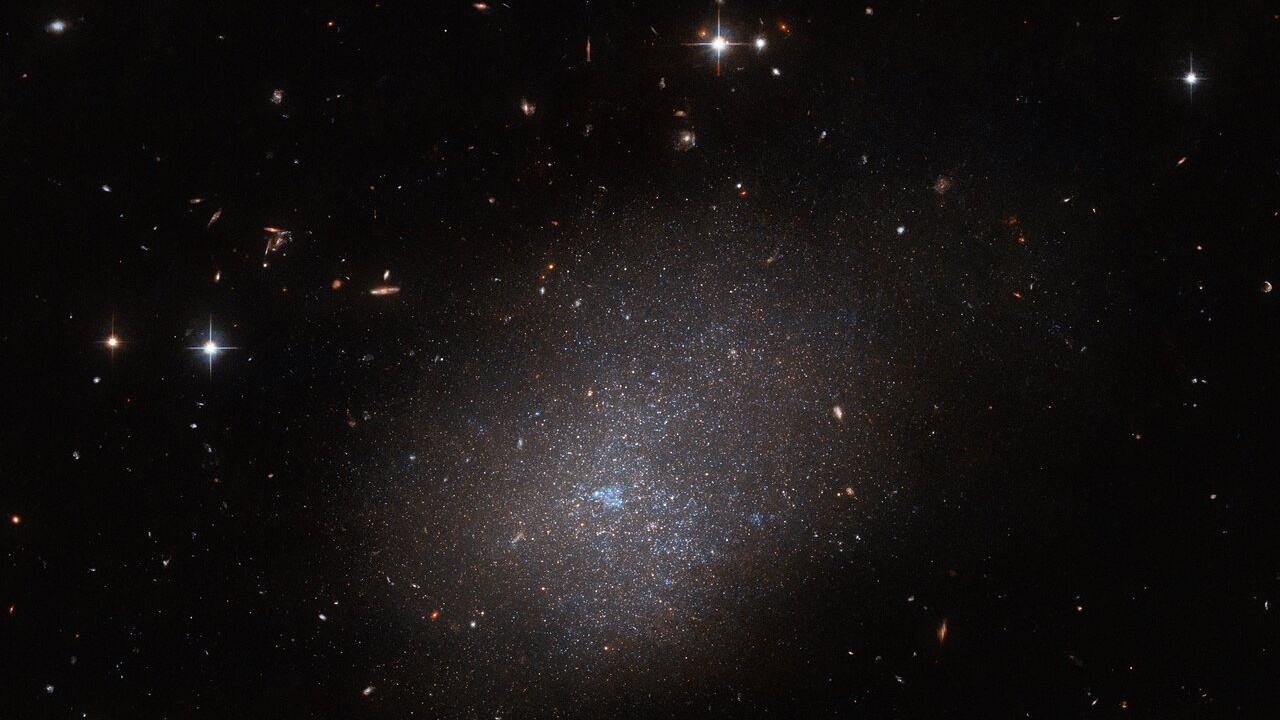Hubble Space Telescope captures 'ghostly' glow of distant galaxy (photo)
European Space Agency officials call it a "ghostly assemblage of stars."

A distant galaxy sparkles from the soft glow of its many tiny stars in a new photo from the Hubble Space Telescope.
The galaxy, named ESO 300-16, is located about 28.7 million light-years away from Earth in the Eridanus constellation and appears as a celestial cloud of sparkling stars against the dark backdrop of space. Other galaxies and stars are also featured in the new Hubble image, providing a captivating view of this cosmic neighborhood.
"The galaxy ESO 300-16 looms over this image," European Space Agency (ESA) officials said in a statement about the image on Monday (Aug. 21), adding that it "is a ghostly assemblage of stars which resembles a sparkling cloud."
Related: The best Hubble Space Telescope images of all time!
This recent view of ESO 300-16 was taken using the Advanced Camera for Surveys instrument on the Hubble Space Telescope, which is a joint mission led by NASA and ESA. It is part of a series aimed at surveying Earth's galactic neighbors.
"Around three quarters of the known galaxies suspected to lie within 10 megaparsecs [32 million light-years] of Earth have been observed by Hubble in enough detail to resolve their brightest stars and establish the distances to these galaxies," ESA officials said in the statement. "A team of astronomers proposed using small gaps in Hubble's observing schedule to acquaint ourselves with the remaining quarter of the nearby galaxies."
ESO 300-16 is classified as an irregular galaxy due to its indistinct shape and lack of nuclear bulge or spiral arms. Instead, it resembles the shape of a cloud, comprised of many tiny stars all clumped together.
Get the Space.com Newsletter
Breaking space news, the latest updates on rocket launches, skywatching events and more!
The stars give off a soft, diffuse light that surrounds a bubble of bright blue gas at the galaxy's core. The brighter, foreground objects represent nearby stars and galaxies, according to the statement.
Join our Space Forums to keep talking space on the latest missions, night sky and more! And if you have a news tip, correction or comment, let us know at: community@space.com.

Samantha Mathewson joined Space.com as an intern in the summer of 2016. She received a B.A. in Journalism and Environmental Science at the University of New Haven, in Connecticut. Previously, her work has been published in Nature World News. When not writing or reading about science, Samantha enjoys traveling to new places and taking photos! You can follow her on Twitter @Sam_Ashley13.









